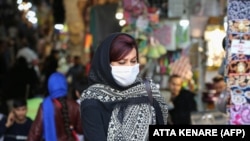Criticizing proposed plans to increase Iran's population, the representative of Mahabad to the Majlis Iranian parliament, Jalal Mahmoudzadeh, says that young Iranians have no choice other than leaving the country in the absence of jobs. “Still, some people are after increasing the population,” Mahmoudzadeh said.
Speaking at Majlis's public session on Monday, Mahmoudzadeh opposed a parliamentary motion for promoting population growth. He claimed that the unemployment rate in several deprived provinces of Iran was more than 25 percent and that in some families, four out of five people were unemployed.
While underlying Iran's meager education, health, and sports per capita, Mahmoudzadeh said woefully, "COVID-19 has already paralyzed us, and we do not have management capabilities."
Iran has no infrastructure even for the existing population, Mahmoudzadeh argued, adding that the nation’s deprived regions were suffering from the lowest-possible per capita income, and that Iran should therefore not seek to increase its population.
Endorsed by most MPs, the "Young Population and Family Protection" parliamentary motion is currently under discussion in Majlis per Article 85 of the Iranian Constitution.
A parliamentary "specialized commission" will weigh the motion and pass it without debate on the Majlis' floor. If endorsed at the commission, the parliamentary motion will directly go to the Council of Guardians for final ratification.
Claiming that Iran will have "the oldest population in the world" in the next twenty years, Kermanshah's representative to Majlis, Zohreh Elahian, told the parliament on Monday, "The next five to ten years give us a golden opportunity to address the issue of population growth."
The fundamentalist MP also maintained that based on a scenario written for Iran, the population in 2100 will reach 30 million people, fifty percent of whom would be elderly.
Elahain's remark may not be correct, considering credible studies show that Iran's population in 2100 will be between 62 million and 70 million people with the current trend.
In recent years, Supreme Leader Ayatollah Ali Khamenei has repeatedly underlined the need to increase Iran's population, warning of an aging nation.
He has even called for increasing the population to 150 million, with Iran's population currently numbering 83 million.
Dismissing family planning as "West's hostile policy against Muslim countries," Khamenei said on July 11, 2018, "The West's population degeneration policy has today troubled them, and they are struggling with the consequences of applying it. Now they want to deprive Muslim countries of large populations, dynamic youth, and efficient human resources."
The subject of Iran's population exhibits an example of "Western prescription," Khamenei asserted, adding, "Recently, the propaganda apparatus of the 'mischievous English government' has prescribed something for Iran. It says that Iran would be a good country with a population of thirty million. Well, you can dream on! By Allah's blessing, our population will reach 150 million!"
In recent years, poor economic conditions and the spread of social problems in Iran have led to a general lack of motivation to have children.
Official government statistics in Iran show that about thirty to forty percent of Iranians currently live below the poverty line.
Nevertheless, Iranian officials have presented "special plans" to encourage people to increase their population.
Last June, the Deputy Health Minister for Family and Population, Hamed Barakati, noted that Iran's population growth rate had decreased to less than one percent for the first time over the past four decades. According to Barakati, the decrease occurred even though the ministry had stopped providing "contraceptive services" and shelved its earlier proposal to people to leave a three-year gap before having new children.
"In the past two years, the marriage rate in Iran dropped by eight percent annually. With this trend, we will be one of the oldest countries in the world in the next thirty years, and this is dangerous in all scientific, social, cultural and economic fields," Barakati said.






